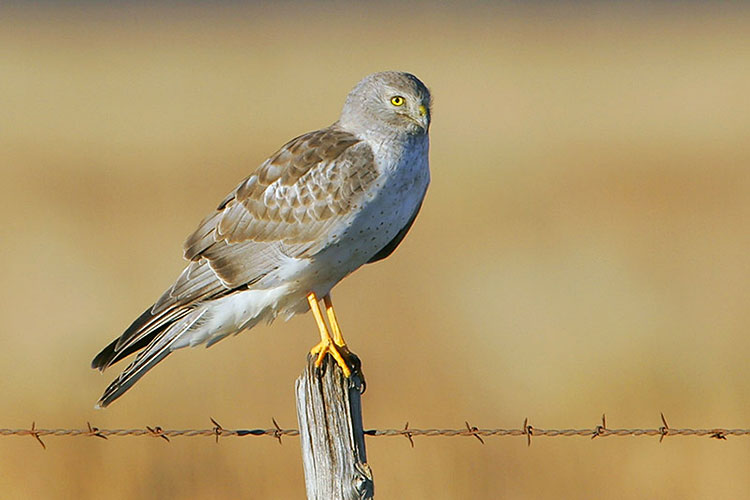The Northern Harrier is a medium-sized, slender raptor with a long, rounded tail and relatively broad wings.
You can find Northern Harriers in fields, wide-open grasslands, or marshes from fall through spring. However, you will most likely notice these birds when they’re in flight. Northern Harriers have a slow and low flight style that gives a good view of their white rumps and V-shaped wing posture.
On this page
Identification
Male Northern Harriers have whitish undersides, are gray above, and have black wingtips. Additionally, they have a black-banded tail and a dark trailing edge to the wing.
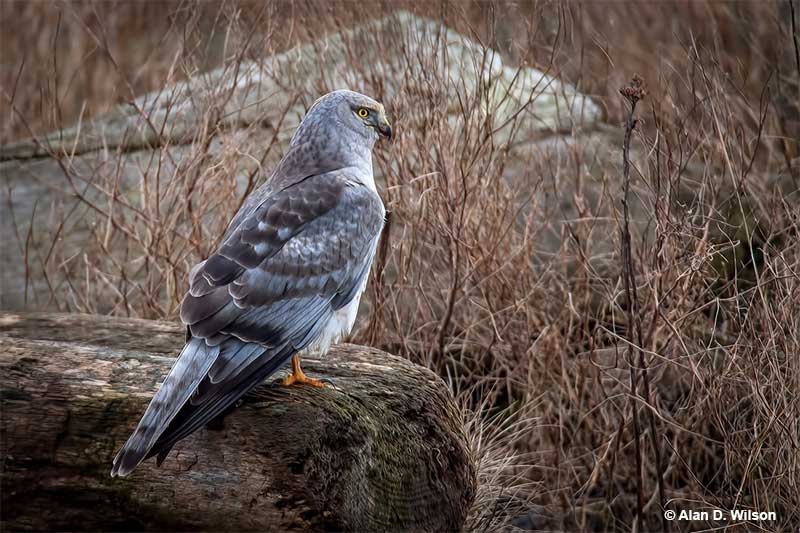
Male Northern Harrier © Alan D. Wilson
All Northern Harriers have a white patch on their rump that is prominent in flight. These birds are 18 to 19.7 inches long, weigh 10.6 to 26.5 ounces, and have a wingspan of 40.2 to 46.5 inches.
Female Northern Harriers look similar to male Northern Harriers. Adult females are brown overall and have black bands on their tails. Additionally, they have whitish undersides that are streaked with brown. They’re roughly the same size as males.
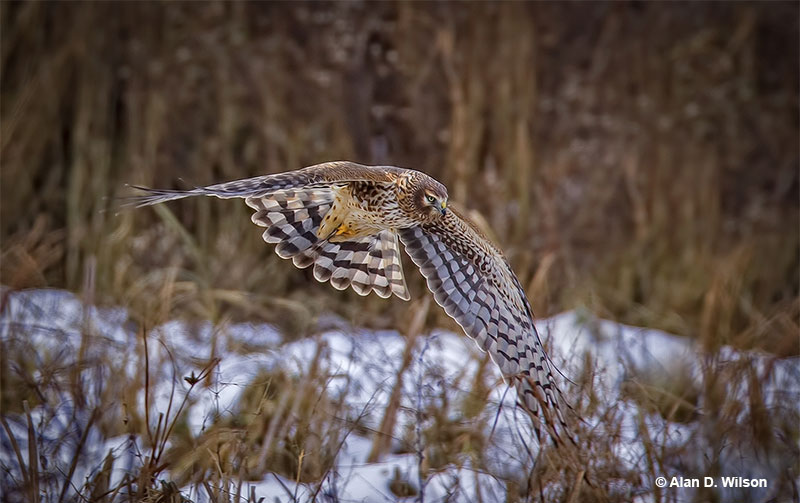
Female Northern Harrier © Alan D. Wilson
Juvenile Northern Harriers look almost identical to adult female Norther Harriers. They’re brown overall and have black bands on the tail. While adult females have whitish undersides that are streaked with brown, immatures have buffy undersides with less streaks.
Food
Northern Harriers forage for food while flying low over the ground. This is unique to this bird because most other hawks rely on their hearing to find and capture prey.
During the breeding season, Northern Harriers eat reptiles, small mammals, birds, and amphibians. During the winter months, Northern Harriers that inhabit the northern part of their range feed almost entirely on meadow voles.
However, they’ll also consume house mice, deer mice, rabbits, shrews, and songbirds like Song Sparrows, Northern Cardinals, and meadowlarks.
Harriers that inhabit the southern part of their range eat house mice, cotton rats, harvest mice, songbirds, shrews, and rice rats.
Nesting and Eggs
Either the male or the female will choose the nesting site. Northern Harriers often nest on the ground in dense clumps of vegetation such as grasses, cattails, willows, sedges, bulrushes, and reeds.
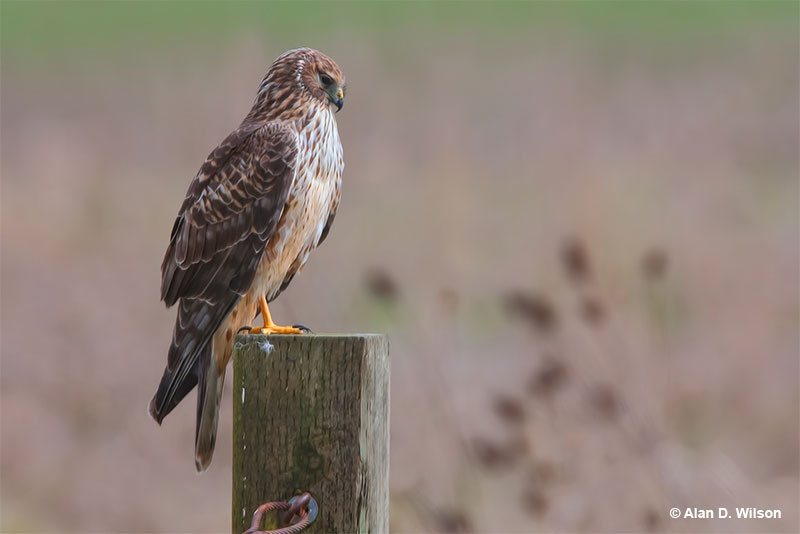
Female Northern Harrier
Males will occasionally build the platform for the nest. Once that’s completed, the female will take over and complete the nest. Later, both the male and the female will collect nesting material, but the female is the one who arranges them to make the nest.
The platform of the nest is usually made with plants that have thick stalks, like willows, alders, and cattails. The inner lining of the platform uses rushes, sedges, and grasses.
It takes around 1 to 2 weeks to complete the nest. The outside of the nest measures 16 to 24 inches across and 1.5 to 8 inches tall. The nest cup is 8 to 10 inches across and 2 to 4 inches tall.
Northern Harriers typically lay around 4 to 5 eggs. Their eggs are pale white. The parents incubate the eggs for around 28 to 36 days.
Current Situation
Northern Harriers are relatively common birds. However, their populations have been in decline. From the late 1960s to 2019, 1% of these birds have been lost every year. That’s a cumulative loss of around 34%.
Their estimated breeding population is 820,000. According to the IUCN Red List, they have a decreasing population and are a species of least concern.
Related: What Eats Hawks?
Habitat loss has been a significant contributor to their decline. Humans continue to allow old farmland to be reforested, develop land for large-scale agriculture, and drain wetlands.
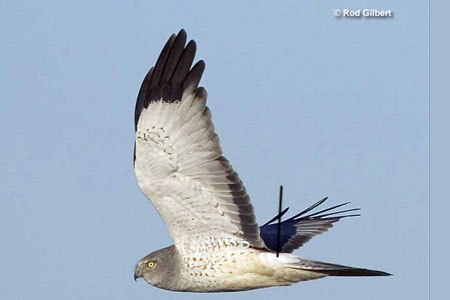
Additionally, a Northern Harriers diet is primarily small mammals; these animals are also in population decline due to reduced shrub cover, pesticides, and overgrazing.
Because they consume so many small mammals, Northern Harriers are prone to developing pesticide buildup as well as directly being poisoned from consuming small animals that have been poisoned.
Breeding Northern Harriers prefer to inhabit large, undisturbed grasslands and wetlands with thick, low vegetation.
They breed in lightly grazed meadows, brackish and freshwater marshes, old fields, dry upland prairies, tundra, drained marshlands, riverside woodlands, and high-desert shrubsteppe across the northern United States and Canada.
Facts
- Northern Harriers are unique hawks because they have sharp, hooked bills and owl-like faces.
- Juvenile female Northern Harriers have dark chocolate brown eyes, while Juvenile male Northern Harriers have pale greenish-yellow eyes. Their eye color will slowly change to a lemon yellow by the time they reach full size.
- These birds are known to roost in large groups. They can occasionally be seen amongst owls as well.
- Male Northern Harriers have been known to have as many as five mates simultaneously. However, the average is only one or two. The female is the one to incubate the eggs and raise the chicks, while the male provides the majority of the food.
- The oldest recorded Northern Harrier lived to be at least 15 years and 4 months old. It was a female, and she was initially captured during banding operations in 1986 in the state of New Jersey. She was recaptured and rereleased in Quebec in 2001.
Similar Species
The Northern Harrier has features that are similar to other bird species. Here are some similar species:
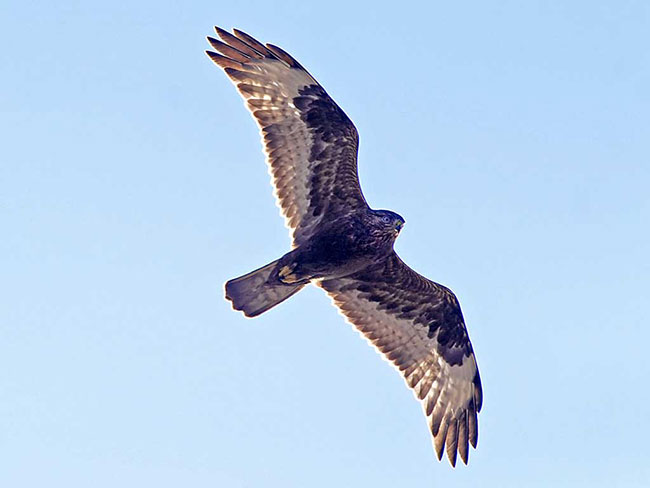
Rough-legged Hawk
Both Rough-legged Hawks and Northern Harriers have a distinctive white rump that can be easily observed during flight.
However, other than that, these birds have notable differences. Rough-legged Hawks have a broader tail that’s shorter in length.
Additionally, Rough-legged Hawks lack the facial disks that give Northern Harriers a somewhat owl-like appearance.
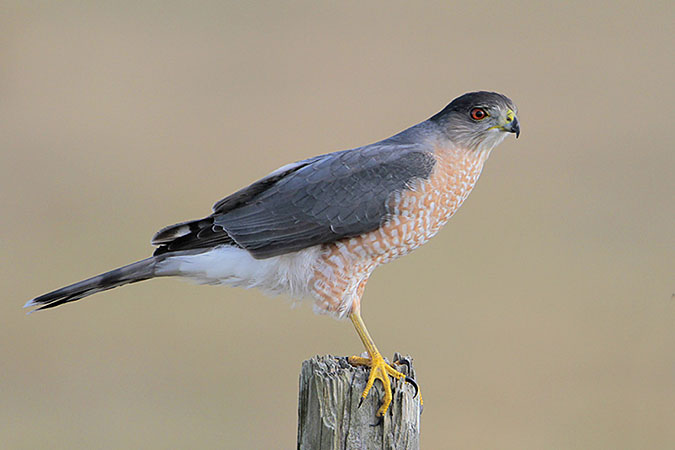
Cooper’s Hawk
Northern Harriers have more pointed and longer wings compared to Cooper’s Hawks.
Furthermore, they have distinct orange barring on their belly, while Northern Harriers have vertical streaks on their stomach.
These birds behave differently as well. Additionally, Northern Harriers do not typically perch in trees, while Cooper’s Hawks do.
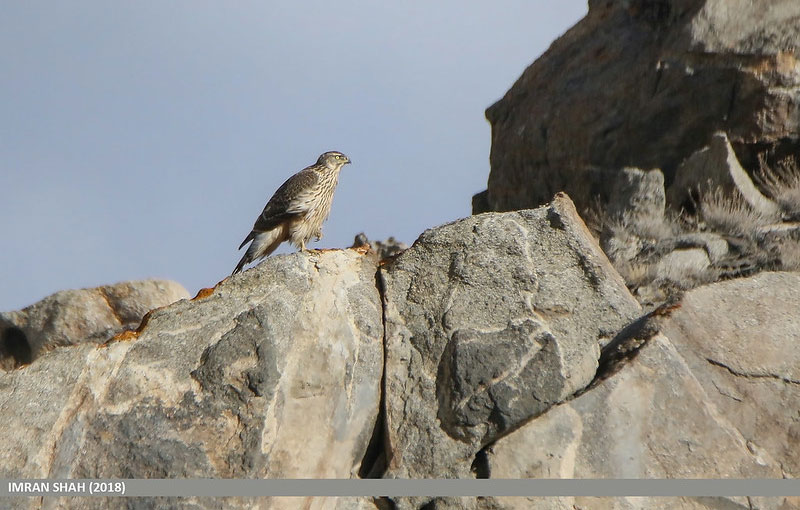
Northern Goshawk © Imran Shah
Contrary to Northern Harriers, Northern Goshawks have a gray back, along with gray barring on the chest that continues down the belly.
They also feature thick white stripes above each eye.
In contrast, Northern Harriers have a distinctive white patch above their tail.
When viewed from above, they appear gray, while from below, they look white.
Frequently Asked Questions
Is a Northern Harrier a hawk?
Yes, the Northern Harrier is a hawk. However, it’s a very distinct-looking hawk. These birds have long wings and long tails and are commonly seen flying low over the ground.
Are Northern Harriers rare?
No, Northern Harriers are not rare. These birds are relatively common and have an estimated breeding population is 820,000. They can be found throughout most of North America, the Caribbean, and some portions of Central and South America.
Are Harriers friendly?
Northern Harriers are skittish around humans but are very social towards other birds. These birds are known to roost in large groups. They can occasionally be seen amongst owls as well.
Is the Northern Harrier bigger than the Red-tailed Hawk?
Northern Harriers are not bigger than Red-tailed Hawks. Northern Harriers are 18 to 19.7 inches long, weigh 10.6 to 26.5 ounces, and have a wingspan of 40 to 46.5 inches. Meanwhile, Red-tailed Hawks are 17.7 to 25.6 inches long, weigh 24.3 to 51.5 ounces oz, and have a wingspan of 45 to 52.4 inches.

